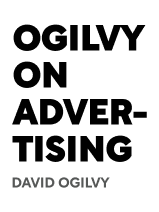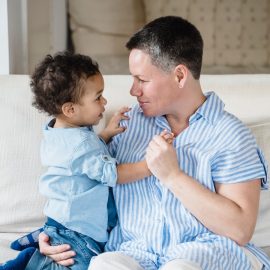

This article is an excerpt from the Shortform book guide to "Ogilvy On Advertising" by David Ogilvy. Shortform has the world's best summaries and analyses of books you should be reading.
Like this article? Sign up for a free trial here .
What are the different types of TV advertising? How do you know what kind of commercial works best for your product or brand?
There are 10 types of TV advertising that David Ogilvy deems “effective.” These are the types of commercials that can help change someone’s brand preference.
Read more about the types of TV advertising and how they work.
Types of TV Advertising
In this section, we’ll first look at some effective and ineffective types of tv advertising before moving on to tips. There are two ways to measure effectiveness—Ogilvy uses the first because it’s more accurate:
1. Changes in brand preference (which brand someone chooses to buy). Ads that make people change their brand preference increase sales three times more than those that don’t.
2. Recall (how well someone remembers an ad). Most advertisers test for recall, but this measure has several flaws:
- Recall doesn’t affect brand preference or sales—people can remember ads but still choose not to buy a product.
- Copywriters can influence recall scores. For example, showing something outlandish, like a gorilla in a jockstrap, will probably make people remember the ad, but it may not encourage them to buy the product.
- Recall tests are better at measuring people’s ability to articulate their memories than measuring what they actually remember.
Here’s the types of TV advertising and how they work.
Effective Commercials
These ten types of TV advertising are more effective than average at changing brand preference:
Type #1: *Funny commercials. In the past, humor didn’t sell because people were more interested in what benefits they could get from a product, but at the time of writing, as long as humor supported the product’s promise, it was becoming effective. However, it’s very hard to write funny commercials, and botched attempts are so clumsy that if you’re not an expert, you shouldn’t try.
Type #2: “Slice of life.” In these commercials, two actors argue about a product, and by the end of the commercial, one has convinced the other that the product has merit. Slices of life are common and often cheesy, but they work.
Type #3: Testimonials. In these commercials, someone talks about how good your product is or how it has changed their life. The best testimonials are given by consumers who don’t know they’re being filmed, and you can encourage a vehement response by asking your actor to criticize your product.
- For example, in one Shell commercial, an announcer explains that an actor is going to discourage customers from buying Super Shell. Then, the actor bad-mouths Super Shell to a customer named Mrs. Longo. He says that she probably gets bad mileage, and she counters that she gets great mileage.
Type #4: *Demonstrations. These commercials show how well your product works. (Note: If you want to demonstrate that your product is better than competitors’, that’s fine, but don’t name their brands. People are less likely to believe your ad and more likely to be confused about which company the ad is actually for.)
- For example, in a commercial for paperboard, International Paper built a canyon bridge out of paperboard and drove a truck over it. This demonstrated how strong the board was.
Type #5: Problem-solve. These commercials show a problem and how your product will fix it.
- For example, in a commercial for Train matches, a man tries to strike “regular” matches in a humid climate and they don’t catch. Then, his wife gives him Train matches, and they strike perfectly.
Type #6: “Talking heads.” In these commercials, an announcer talks about how wonderful a product is. This type of commercial is especially good for introducing new products and while adpeople think they’re uncreative, they work.
Type #7: Unusual characters. Characters are recognizable people who symbolize your product.
- For example, the baker “Titus Moody” was once a recognizable character in Pepperidge Farm commercials.
Type #8: Fact-based. These commercials objectively explain the benefits of a product.
- For example, Maxim Instant Coffee used a fact-based commercial to explain that their coffee was excellent because it was freeze-dried. Freeze-drying intrigued many people.
Type #9: *News. These commercials share new or updated information, such as the release of a new product, or an update of an old one.
Type #10: Sentimentality. These commercials use charm and nostalgia and are especially effective for products that aren’t unique. However, they must be accompanied by a reason why a viewer should let their emotions make a decision.
- For example, one beer commercial talked about brewing in the traditional way and showed images of a traditional ranching lifestyle to create a positive feeling of nostalgia.
The types of TV advertising can help you understand how to create effective commercials

———End of Preview———
Like what you just read? Read the rest of the world's best book summary and analysis of David Ogilvy's "Ogilvy On Advertising" at Shortform .
Here's what you'll find in our full Ogilvy On Advertising summary :
- What the "father of advertising" has learned from his decades' of experience
- How to craft easy-to-understand ads that work
- The 6 pioneers of the advertising industry






